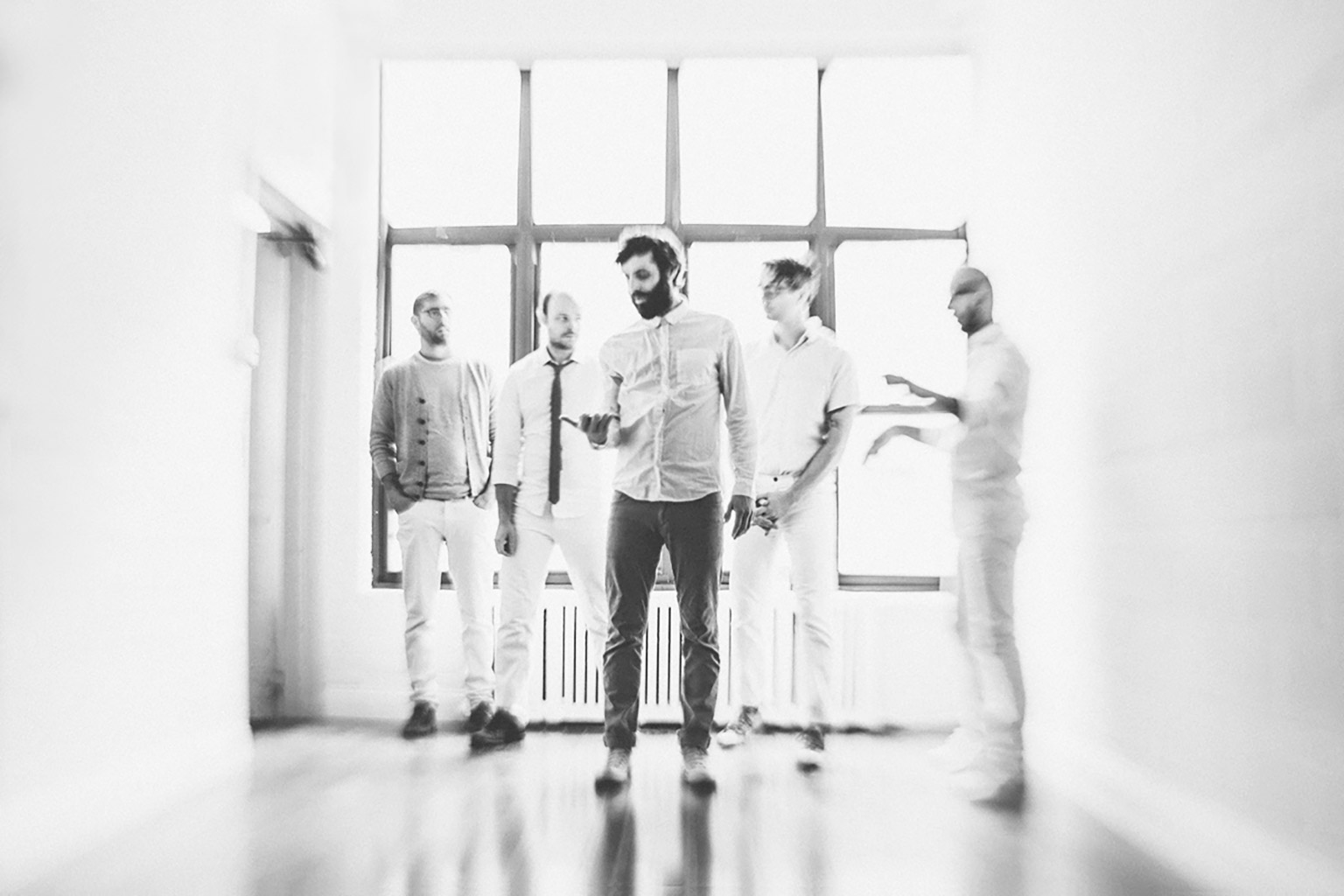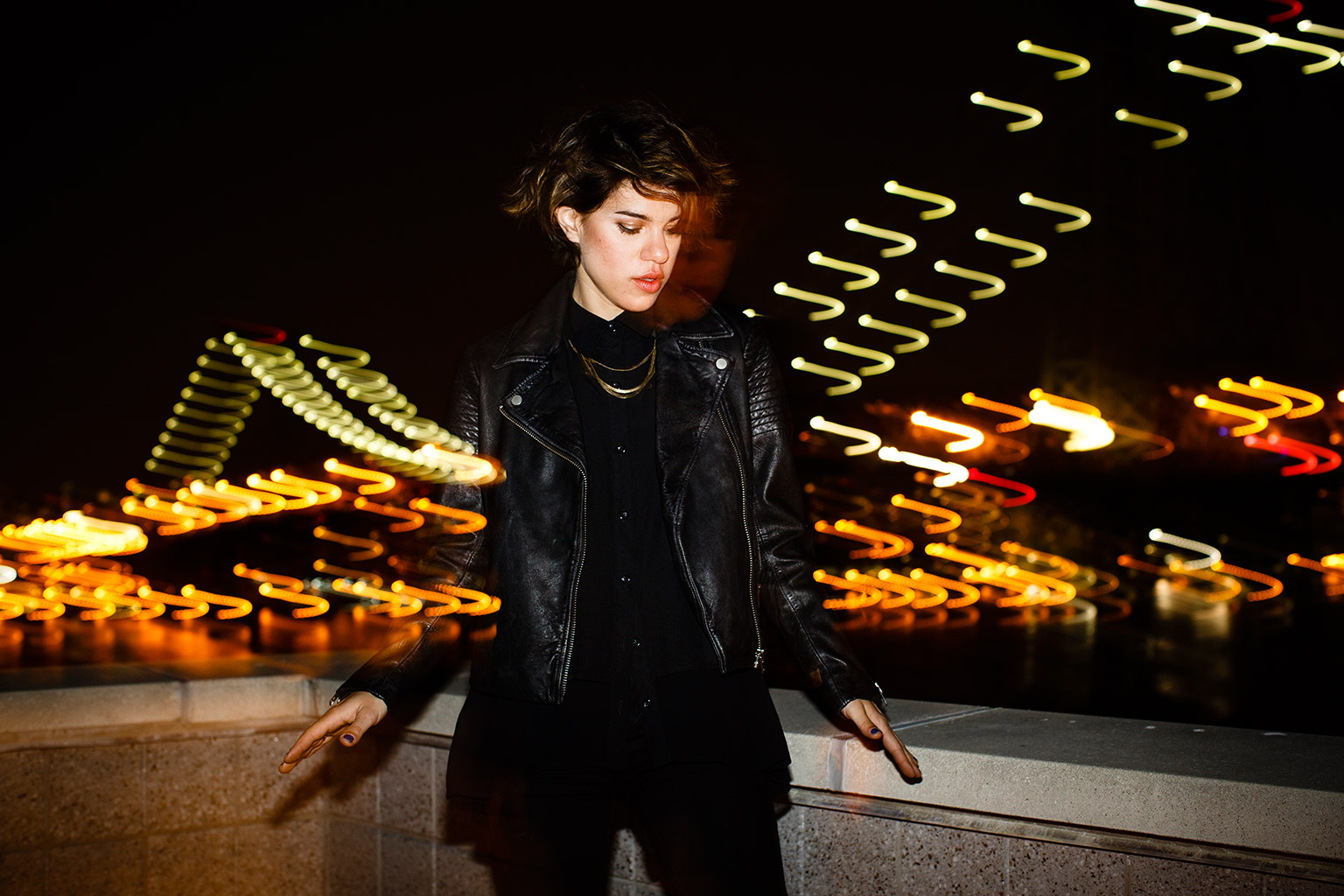Most of the music I tend to love falls into some pretty easy-to-predict categories—poppy but not too poppy; vocal-driven; major chords, no blues progressions; rhythmically interesting; melodically dense, even if in subtle ways.
But the music of Luxembourg-born, Iceland-raised, NYC-residing Úlfur Hansson (who simply goes by Úlfur) is anything but easy to categorize. His just-released sophomore album, Arborescence, is a wonderfully adventurous sonic exploration, one that’s both really interesting and really compelling musically, winding from atmospheric symphonic soundscapes to warmly humming choral pieces.
Given Hansson’s diverse background in the worlds of dance, hardcore, and symphony, his collaborations with black metal drummers and members of múm and Sigur Rós, and the fact that he invented and built some of the instruments used on the new album (such as the electromagnetic harp pictured above), it makes some sense that labels wouldn’t stick well to his work, but we were compelled to find out more about the music of Úlfur and inspiration behind it.
raven + crow: It’s funny—leading up to this interview, I did a quick search in my email for your name to bring up your bio and stumbled across this 2013 newsletter from Other Music in NYC (RIP) with a review of your debut where the writer called the album “a warm studio creation that combines a host of natural field recordings, building percussion from stones dropping into an Icelandic pond, or birds on the wing, coupled with his own subtle instrumentation.” Does that bring you back at all?
Úlfur Hansson: I actually can’t remember that particular review, but it’s definitely an accurate description of what was going on with that album. It’s funny reading about other people’s experiences of my music, since my relationship with it is already so intimate. It’s almost as if I live inside of it—the things i’m building—but it’s impossible for me to see it from the outside, the exterior.
No, that makes a lot of sense. How did recording this follow-up to your debut some four years later differ for you?
White Mountain was recorded while moving around, on tours here and there across the world—written and produced on my laptop; no consistent time in a studio at all. Arborescence, on the other hand, was recorded in a live studio environment, at Figureight in Prospect Heights, NYC. The immediacy of sticking with whatever happens in the moment, making decisions right then and there / no edits! / no alternative takes—Randall is adamant about using the computer as a tape machine, and it really contributes to the studio ghosts, the magic of the recording arts. I am much more focused these days, and I think the two albums couldn’t be more different form each other.
They are very disparate—I feel like you can tell they come from the same artist, but they’re still very different pieces of a whole, it’s true. Can you talk about the inspiration for Arborescence? Does it tell a story or hold together as a larger narrative or is it more a collection of related songs for you?
Despite being composed of very different musical languages and ideas, Arborescence is bound together by an arc that spontaneously arose from a strong sense of intent. I think having visualized the entire weight and body of the album beforehand really contributed to how it all came together in the end. The collaborative side of it too, it all kind of effortlessly “clicked” together then and there, I think in part because of the time I spent on developing vivid intent.
Nicely put. I feel like, in all creative fields, so much of the work comes before pen’s put to paper, so to speak. You’re actually based out of New York now, right?
Yes!
Ah, we miss it still. Though we won’t come February. Those winters. Do you still feel a strong connection—emotionally, musically, culturally—to Iceland though? I know you were born elsewhere, but I think you were primarily raised there, if I’m not mistaken.
My strongest emotional, cultural, and musical connections usually have more ties towards people, individuals; when you resonate with another. I think that plays a bigger part than the actual place in and of itself; BUT, Reykjavík happens to be full of inspiring musicians and artists, it’s very special in that way.
See, I’ve asked this of other Icelandic artists we’ve interviewed, but I’m curious as to your take on why exactly the music and arts scenes in Iceland are so very vibrant and expressive.
It’s so cold and isolated, and homogenic – maybe it’s a reaction to the grimness of monoculture, there are a lot of great world-builders doing art in Iceland.
Yeah, that’s the general consensus. Makes me want to move away from Los Angeles. Speaking of the West Coast, though, I know you studied as a composer out here for a spell. Do you feel that place or ideas of place or home enter your music a lot?

I think what interests me most in music and in sound comes from outer space, but yes, I definitely grew as an artist living and working in the bay area for two years.
We mostly occupy ourselves with music that would fall pretty evenly in the pop realm, even at its most experimental. But you seem to jump back-and-forth from pop to symphonic to what most would term as experimental. I’ll avoid the more banal questioning along the lines of ‘what do you consider your music,’ but I am curious about your process. Are the inspirations or ideas that led to, say, “Arborescence” (the song)—the cinematic opening instrumental title track that begins with a rhythmic cacophony—the same inspirations or ideas that led to the poppier, lyric-driven “Fovea”? Or how do those inspirations relate for you, on this album and past ones?
Well, the title track “Arborescence” was originally written for the Icelandic Symphonic Orchestra, and “Fovea” was written on guitar. I’m interested in every possible approach to express myself through sound. That’s the whole idea behind the album, and defines the meaning of the title. Weightlessness sounds like a metal riff to me, but i wrote it with a Midi sequencer on my computer, so it’s computer music; although the sound itself is coming from an orchestral sized church organ that I could patch my computer into to control it. I took the bellows apart and restricted airflow to the 6000+ pipes in the instrument, the sound of which informed how I continued to develop my metal riff, on my computer, to create an electro-acoustic piece. It’s that kind of recursive, reiterative process I like to pursue. It’s arborescent, all the different means to create music that have been influential and meaningful to me growing out of myself, like a tree.
That reminds me—I really need to start working that word into conversations. How about that percussive intro in the title track—was that Greg Fox? I read he played on the album in places.
Greg is a phenomenal musician. I had been wanting to work with him since I played at this festival in 2011, where Liturgy where sharing the stage with us. He is a good friend and continues to impress and inspire, I feel lucky to have become part of such a great scene of musicians in Brooklyn.
Yeah, I love his work with JDFR. An all-time favorite band of mine was Rachel’s, who were out of Louisville, KY and brought this independent sensibility and driving rhythm to what little I knew at the time of modern symphonic music. Just wondering if you have any bands or composers who are pushing music that’s traditionally considered classical or symphony-based into the popular realm well.
I like Rachel’s, I remember this one album A Ritual Loop, by one of their members—it’s an amazing album, so good. There is a lot of good music out there, especially in terms of crossing borders. There are many examples. For instance, Monoliths & Dimensions is a phenomenal record that binds very different elements into a singular behemoth of sound. From the top of my mind, you’ll also hear things like “four ethers” by serpentwithfeet on the radio, which is Hector Berlioz seamlessly integrated with an R&B anthem. I also love what Anna Von Hausswolff does with the pipe organ.
Per Mission was the band—mainly Jason Noble, I think, but Rachel was on there too. Yeah, awesome stuff. We’re starting to veer into my dear post-punk southern 90’s though. Back to now, are you touring the album at all?
Yes!! I’ll have more info on that soon, I’ll be sure to keep you posted!
I’m excited to see what your live show will look like. Thanks so much for taking the time to talk, Úlfur.
You can listen to Úlfur’s new album, Arborescence, above and on his BandCamp page, where you can also buy digital and physical versions of the album. Water/arm photo of Úlfur by Elísabet Davíðsdóttir.




